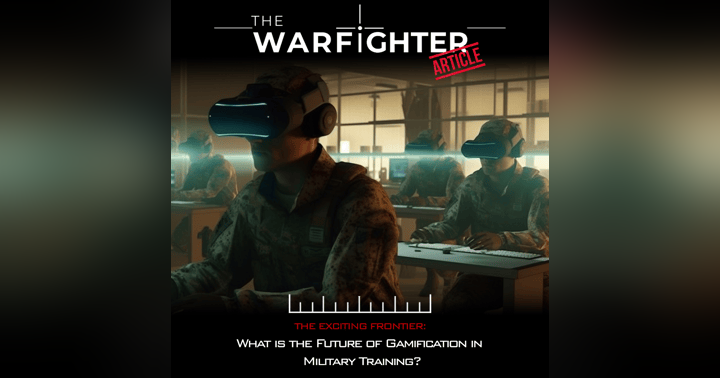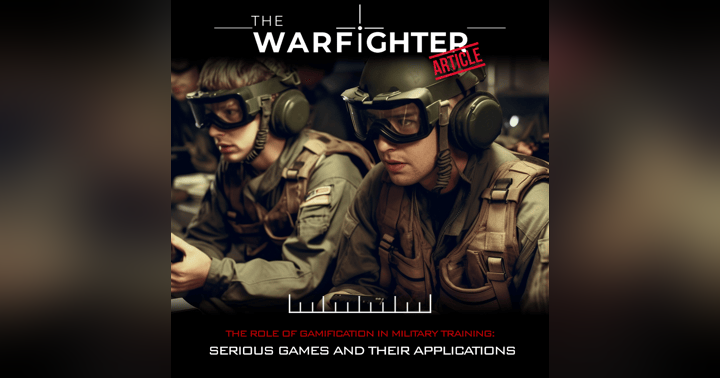How is the military uses Mixed Reality (MR) for Training and Operations

Introduction
Mixed reality (MR) is an emerging technology that has the potential to change how we interact with the world around us. This technology, which combines aspects of both augmented reality (AR) and virtual reality (VR), can be used for training purposes as well as actual operations on the battlefield. In fact, US Army troops have been using MR headsets during combat training exercises since at least 2017—and these devices are expected to become even more widespread in coming years.
If you're looking for a great overview from someone already serving in the British Army then we'd highly recommend listening to our below podcast:
What is meant by the term: Mixed Reality
Mixed Reality is a term that encompasses a wide range of technologies and applications. For example, it could mean that an AR headset shows you the view through your own eyes in addition to overlaying virtual objects on top of them. Or it could mean that your MR headset allows you to see only what's in front of you while an AR device tells you where everyone else is.
It’s important to note that Mixed Reality can be used for training all on its own, without any VR component involved (though there are some specific scenarios where both are required). However, some might find it helpful to think about how the different components work together when designing their MR solution or considering whether their application needs one or both types of technology.
Mixed reality is already part of military training and operation, even if you don't realize it.
Mixed reality is already part of military training and operation, even if you don’t realize it. The US Army today uses versions of the HoloLens AR headsets as part of its Integrated Visual Augmentation System (IVAS), which allows soldiers to visualize data, see around corners and through walls and provide real-time communication with other teams. MR technology is also being used by the US Navy for training purposes.
It’s only a matter of time before these technologies become more widespread throughout all branches of the military—and perhaps even beyond them.
You might have heard of HoloLens, the augmented reality (AR) headset that Microsoft developed.
You might have heard of HoloLens, the augmented reality (AR) headset that Microsoft developed. It's a wearable, untethered headset that allows users to interact with virtual objects in the real world. However, people can't just walk around with a HoloLens on their heads all day—it's not practical because it requires some kind of tethering to power or network connectivity. So how does this affect how MR is used by military personnel?
The US Army today uses versions of the HoloLens AR headsets as part of its Integrated Visual Augmentation System (IVAS).
With the help of Microsoft HoloLens technology, the US Army today uses versions of the headset as part of its Integrated Visual Augmentation System (IVAS). IVAS is a training program for soldiers in combat situations. It also has an operational component that allows real-time monitoring and visualization of enemy targets by using MR to display data on the field.
IVAS brings together several different technologies to develop a single, unified Mixed Reality (MR) training and operations system.
IVAS is a complex system, but it is designed to make the most of existing technologies. It combines several different technologies to create a single system. For example, IVAS uses augmented reality using special lenses that display images on top of what the soldier sees in the real world through their helmet's visor. While this sounds like it would be hard to use in training and combat situations, it has been proven useful by soldiers who have access to these visors during operations.
IVAS is built on a ruggedized version of Microsoft's HoloLens 2 headset.
The IVAS software is built on a ruggedized version of Microsoft's HoloLens 2 headset, which is designed to be used in military training. The hardware has been modified to withstand the rigors of combat zones and still provide an immersive experience for soldiers.
For military training, IVAS provides realistic simulations across multiple branches of the armed forces.
-
IVAS is used for training soldiers in a variety of scenarios. The technology allows soldiers to train in complex environments where there are many variables, such as driving an armored personnel carrier through a combat zone or conducting an operation at night and in bad weather.
-
For example, if you're training on how to operate a tank in the desert during the day, but your base only has access to urban areas and buildings, then you can use IVAS to simulate driving your tank along dirt roads and over sand dunes. This changes things up from what would be available at the base itself, making training more realistic and giving soldiers more experience with different conditions that they may encounter.
As valuable as IVAS is to military training, it also has huge potential uses in actual combat operations.
The military has been using IVAS in training scenarios to help soldiers learn how to operate various pieces of equipment, from tanks and aircrafts to drones and artillery.
For example, IVAS can be used to train soldiers on how to use a tank's weapons system or where the best firing positions are for a given mission.
In addition to providing this type of hands-on training, IVAS can also provide real-time information about enemy positions so that soldiers are better prepared for combat situations.
Recent issues and challenges with the IVAS program
-
IVAS is not currently available to the general public. It is only available to military members and their families.
-
The IVAS program has not yet been fully developed, so there are still some issues that need to be resolved before it can be used as a complete solution for training and operations.
-
While the concept of IVAS has proved successful in training environments, there have been some reliability issues with the hardware itself. Some users have complained about screen flicker or minor glitches during gameplay.
In addition to its partnership with Microsoft and its use of the original HoloLens technology, the US Army is also working with Finnish company Varjo on its own MR headset.
In addition to its partnership with Microsoft and its use of the original HoloLens technology, the US Army is also working with Finnish company Varjo on its own MR headset. The company's headset is called the Varjo XR-1, and it features an eye-tracking sensor that allows for "adaptive resolution" in which users can see objects at different resolutions based on how close they are. This feature helps reduce eye fatigue by ensuring that soldiers' eyes don't need to constantly refocus when moving from one object to another.
Mixed Reality has many applications in military work and capabilities are growing with new tech designed specifically for use in DoD work
Mixed reality is a technology that combines virtual and augmented reality to create a new, immersive experience. It can be used in multiple ways that benefit both military training and operations. Mixed reality can be used to train soldiers on the use of weapons, tactics, and procedures without putting them in harm's way. This helps reduce injuries while also increasing efficiency by allowing troops to gain necessary skills at their own pace.
Another important application for mixed reality is in the field of command-and-control systems (C2). C2 platforms allow commanders at all levels access to mission details, real-time data about friendly positions or enemy forces—even if they are located thousands of miles away from each other—and more accurate assessments about ongoing operations than ever before possible. However because these systems are so complex they require careful planning before implementation; otherwise you could run into serious problems like losing communications between different branches or teams within your organization due to incompatible software versions which can have disastrous effects on everything from communication between ground troops who need assistance but are unable to reach their superiors due
to faulty equipment such as radio transmitters malfunctioning when trying communicate with someone outside their immediate vicinity."
Conclusion
We're excited to see where Mixed Reality goes next and how it will continue to change the way we train and fight.










